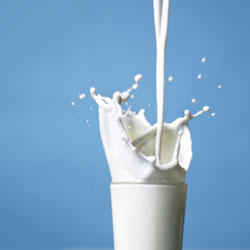 “Free from Permeates” … Why do some milk products now make these claims?
“Free from Permeates” … Why do some milk products now make these claims?
Some of you may be wondering, “Is that a good thing?” It’s a simple question to which I will try to give a simple answer…
Milk companies in Australia have been under sufficient scrutiny the last few years. In 2008, dairy farmers accused food producers of “watering down” milk with permeate to save costs by reducing the volume of milk required from farmers.
Enter unhappy dairy farmers.
So What Are Permeates?
“Permeate’ is the technical term which applies to all membrane filtration processes used across food production and other industries. In the milk industry there are two types of permeate:
- one is a by-product of making cheese called ‘whey permeate’ and is considered a ‘waste-product’
- the other is ‘milk permeate’ a by-product of milk processing or ultra-filtration i.e. it is milk from which most of the protein and fat has been removed by filtration. Permeate has a watery consistency, and is green in colour due to the presence of B vitamins. It consists of lactose, water, vitamins and minerals.
The use of such technologies ensures every component in milk is used efficiently to maximise the yield of milk with no waste and produces a consistent product to the consumer throughout the year.
Only ‘milk permeate’ is legally allowed in Australia to be mixed back into milk to standardise fat and protein levels.
Why Do We Have to Standardise Fresh Milk?
Because milk is a natural food (clearly some more then others and we’ll discuss this later) that comes straight from the cow, its composition can vary weekly/monthly due to the phase of the lactation cycle, what farm it is from and by the breed of cow. Regional and seasonal factors also contribute to differences in milk composition such as the fat and protein levels. Standardising milk gives consumers consistency in composition and taste.
So Why Has This Become Such An Issue?
Further consumer concerns where raised in 2012 when milk processors admitted that permeate was added to milk for retail sale, but that this was done to standardize levels of fat and protein as required by food standards regulations.
Enter unhappy consumers.
Consumer groups argued that permeate is simply added back into milk so that dairy processors save the cost of disposing of the product.
This has resulted in several milk brands and dairy processors in Australia purchasing more milk from farmers and declaring their products as “permeate-free” ALL IN ORDER TO KEEP COSTUMERS HAPPY.
Dairy Innovation Australia’s ingredients and applications division manager Martin Palmer stresses that, “The issue relates to the confusion of ‘milk permeate’ and ‘whey permeate’. The dairy industry routinely standardises the fat and protein levels of drinking milk by using milk permeate – this is a legal and acceptable under all applicable food standards and regulations. However, the use of whey permeate for this purpose is not permitted and does not happen in the Australian dairy industry. This is an important distinction from the industry and consumers’ points of view, as it removes the connotation of a ‘waste product’ from another process being added back into milk.”
Phew! So is milk permeate really a waste product or not?
Will we ever really know?
Confusion or no confusion Martin Palmer — it sounds like consumers are growing tired of foods being tampered with. Why do so many of our foods go through so many processes to bring them from farms to our table?
And are all of these manufacturing steps needed?
What happens to the nutritional value of theses foods?
Lets look at an example of membrane filtration in another food arena…
So we know that ‘permeate’ is the technical term which applies to all membrane filtration processes used across food production and other industries.
Here’s another interesting example when producing apple juice the fruit is put through a similar filtration process where permeate is the clear juice we end up buying and consuming. Does this type of juice have more or less nutritional value?
Obviously less. This process extracts important vitamins and minerals and without the fibre and pulp our blood sugar levels escalate, then plummet and pretty soon we search for another sugar fix.
So how do filtration processes effect milk? That’s another great question. As is, “Could the processing of milk be one explanation for why so many people have milk allergies?”
In the next post I’d like to offer you an extract from the Health Foundations sections in
“What? Aren’t all dairy products healthy?” I hear you ask. Take a read I think you’ll find this information fascinating!
. . . . .
From the desk of…
Jennifer Barham-Floreani
Bach. Chiropractic, Bach. App Clinical Science
Registered internationally, no longer practicing as a chiropractor in Australia.
. . . . .


 “Free from Permeates” … Why do some milk products now make these claims?
“Free from Permeates” … Why do some milk products now make these claims?
